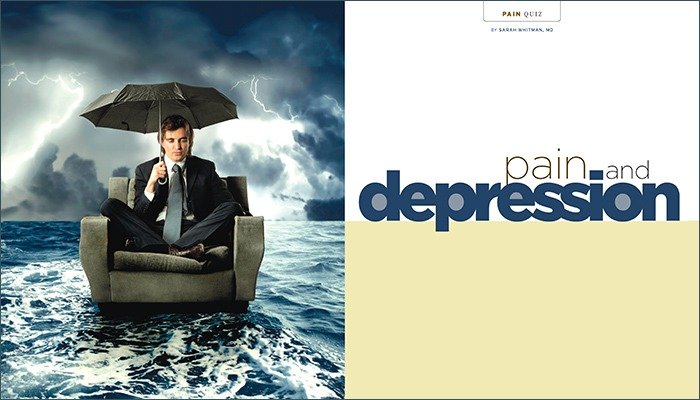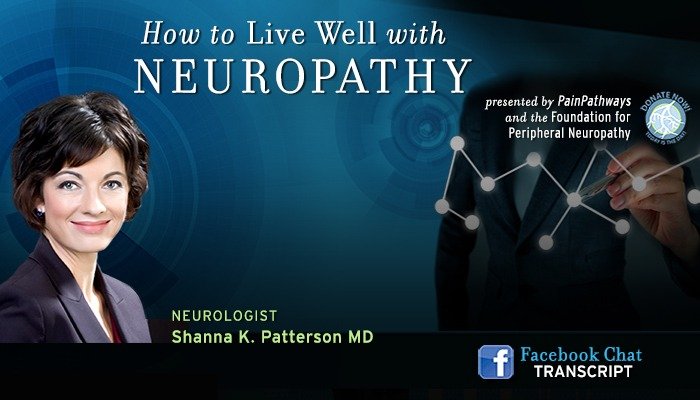Pain and Depression

Winter can be especially tough for people with chronic pain. Cold, wet weather can aggravate pain. Snow and ice can make socializing and staying active a challenge. Darker days can trigger sadness or even depression. Before depression or other psychiatric conditions can be treated and improved, they first have to be identified. Your pain management doctor should ask you about feelings and symptoms, and how you’re coping with pain. Don’t be embarrassed, or feel like you’re complaining, if you’re having trouble handling pain or if you’re feeling low. Speak up and tell your team what’s going on. Getting help and feeling better are important! To learn more, review these questions and answers.
Having chronic pain means I will become depressed, experience anxiety and have disturbed sleep.
A. True B. False
If depression or other psychiatric conditions are present along with pain, it’s crucial to treat both.
A. True B. False
My doctor recommended that I see a pain management psychiatrist or psychologist, which probably means he or she believes my pain is imagined, just in my head.
A. True B. False
Medications used to manage pain can cause psychiatric symptoms, including depression.
A. True B. False
Antidepressants can be prescribed to treat pain itself, even if the person in pain doesn’t have depression.
A. True B. False
Most people with chronic pain take many medications that result in side effects, so trying non-medication treatments for depression is a good place to start.
A. True B. False
QUIZ ANSWERS
1. (B) False. While these symptoms are common in patients with pain, chronic pain does not automatically sentence you to depression, anxiety or poor sleep. Take symptoms seriously and tell your provider. Safe and effective options are available to help you feel better, physically and mentally.
2. (A) True. Treating one doesn’t make the other go away. For example, if someone has depression and pain, treating just pain doesn’t necessarily mean the depression will go away. Likewise, trying to treat just the depression without lowering pain levels is often not successful. Often, neither gets better unless you treat both. Seeing a pain psychiatrist can help.
3. (B) False. If your doctor has recommended a pain management psychiatrist or psychologist, it does not mean the pain is imagined. A pain management psychiatrist understands chronic pain and can help you learn ways to decrease and cope with pain. Talk to your doctor for a referral to someone who specifically has expertise in treating pain.
4. (A) True. Many pain management drugs cause psychiatric symptoms, including sedation or depression. It’s important for someone on your treatment team to figure out what’s causing what and make recommendations to minimize side effects. Some pain medications may cause unusual or serious psychiatric side effects. For example, medications that are “NMDA receptor antagonists” such as Dextromethorophan or Ketamine can cause anxiety, hallucinations or cognitive problems. Most doctors prescribing these require a prior psychiatric evaluation to be sure there aren’t underlying psychiatric disorders that might be worsened by these medications.
5. (A) True. Antidepressants can be used for managing chronic pain itself, separately from treating depression. It’s important to remember that if your doctor recommends an antidepressant, it doesn’t mean that your pain is “in your head” or that you’re simply imagining your pain. As well, we know that pain often exists along with depression and anxiety, so these medications can be a good choice when psychiatric symptoms are present along with pain. Using one medication for multiple symptoms is a good idea. Three different categories of antidepressants used to treat pain are:
1) SNRI (Serotonin-norepinephrine reuptake inhibitors) “Dual-action” anti-depressants, those that work on both the serotonin and norepinephrine systems, help with pain. An example is Cymbalta, which is helpful in both diabetic peripheral neuropathy and fibromyalgia, and Savella, which is approved forfibromyalgia.
2) Tricyclics (TCAs) These older antidepressants can help many pain conditions. In fact, they are the most studied antidepressants for pain. However, even though they work, they are not FDA approved to treat pain. Examples include amitriptyline (Elavil) and nortriptyline (Pamelor).
3) SSRIs (Selective serotonin reuptake inhibitors) There is some evidence, though research has been mixed, that SSRIs help with both migraines and chronic daily headache.
6. (A) True. There are many types of therapies that can make a difference in your mood fairly quickly. You can also learn new skills—such as relaxation techniques and visualization—that can both decrease pain and improve your mood. Therapy is also a place to get support for the challenges you’re facing and to figure out how to improve your life. Unless symptoms are severe, starting with therapy (before medication) is ideal, to see if therapy alone can help you feel better.
Sarah M. Whitman, MD, is a board-certified psychiatrist with over 22 years of experience. In her private practice, she works primarily with patients with chronic pain. Dr. Whitman supports an integrated approach to pain management that involves medical and psychological components. To learn more, visit www.HowtoCopewithPain.org.
PainPathways Magazine
PainPathways is the first, only and ultimate pain magazine. First published in spring 2008, PainPathways is the culmination of the vision of Richard L. Rauck, MD, to provide a shared resource for people living with and caring for others in pain. This quarterly resource not only provides in-depth information on current treatments, therapies and research studies but also connects people who live with pain, both personally and professionally.
View All By PainPathways






